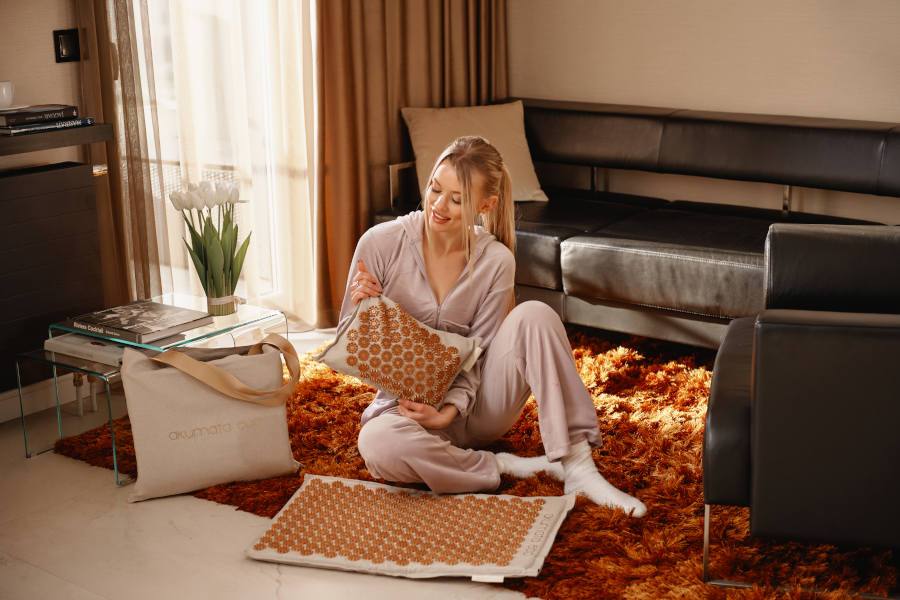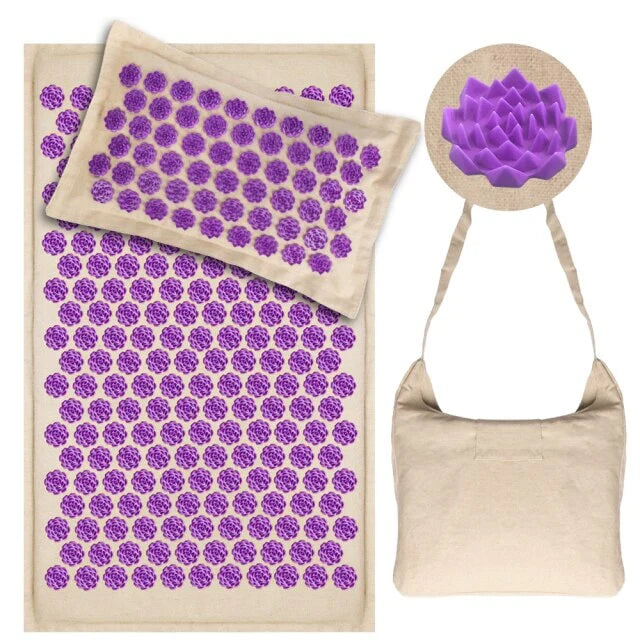You're bound to know someone who suffers from it. Migraines affect 15% of adults and even 20% of women. Victims of this pulsating headache are generally aged between 30 and 40. 5% of children are also affected.
Modern medicine has effective means of action. Traditional Chinese medicine, too, thanks to the benefits of acupressure.
Find out how acupressure can rapidly relieve a migraine.
How can you tell if you've got a migraine?
Migraine is an illness whose main symptom is a violent headache that manifests itself in waves. This is known as a pulsatile headache. It generally occurs during acute attacks.
It is characterized by :
- A severe headache localized in the temples or part of the skull, often unilateral and over one eye.
- Sometimes nausea.
- Strong sensitivity to noise or light.
- Recurrence.
- Sometimes digestive problems.
In 20% of cases, there is a prior "aura" characterized by :
- Lurred vision: spots, lines, points of light, blurred vision... (known as an ophthalmic migraine).
- Tingling in the arms or mouth.
- Language difficulties
What causes a migraine?
From a physiological point of view, migraines are caused by a dilatation of the cerebral blood vessels supplying the meninges, i.e. the membranes protecting the brain.
This dilation is itself triggered by nerve stimulation, often visual or auditory. This extreme nerve sensitivity is genetic in origin.
In concrete terms, the factors that trigger a migraine can be :
- Stress or anxiety.
- Lack of sleep.
- Sensitivity to gluten and/or an excessively rich diet.
- Alcohol or chocolate consumption.
- Violent and/or repetitive noise.
- Flashing lights, often on computer screens or video games.
- Adrop in estrogen levels at the end of the menstrual cycle.
- Certain psychological factors.
How long can a migraine last?
Without analgesics, a migraine attack generally lasts between 2 and 5 hours before suddenly disappearing. For 10% of migraine sufferers, the attack lasts more than 2 days, with severe fatigue. This is a real social handicap.
An attack may occur a few times a year or once or twice a week.
How can I quickly relieve a migraine?
As soon as the aura begins, or the first symptoms are felt, you need to act immediately. There are a number of things you can do to provide relief while you wait for medication to take over.
To relieve a migraine, you should :
- Lying down in a dark, cool, quiet room.
- Practice a deep breathing exercise inspired by sophrology.
- Apply a cool or warm glove to the forehead.
- Massaging the temples vigorously, with or without a massage balm.
- Cenching the jaw during this massage helps provide deeper relief
- A roll of essential oil passed over the temples can also help to relax.
- Massage the trapezius muscle at the nape of the neck and shoulders.
- Use your thumbs to massage the base of the skull at the nape of the neck.
- Drink ginger tea for its analgesic properties.
- Drinking coffee after a migraine has set in relieves the pain, as caffeine acts to dilate blood vessels.
Acupressure for migraine relief
A complementary approach is to use acupressure to relieve a migraine. Unlike acupuncture, which uses needles, acupressure requires only the fingertips to press on specific pressure points.
The main acupressure points for migraine relief are :
1- Top of the head (Bai Hui)
This acupressure point is located at the top of the skull. Massage for three minutes in a seated position.
2- Nape of the neck (Feng Chi or VB20)
In Chinese medicine, this is the gall-bladder meridian. This point is located at the junction of the skull bone and the top of the neck. Massage these two points with your thumbs, applying deep pressure for four to five seconds, then pause and resume. Relief should be rapid.
3- Temples (multiple "extraordinary" points)
This point does not belong to any meridian. It is located next to the outer eyebrow, in the temple area, and is highly effective against headaches. It's one of the points we often massage spontaneously. In fact, your temples have numerous anti-migraine acupressure points distributed in a curve around the outer ear.
4- Knees (Yang Ling Quan)
More surprising and probably less spontaneous, this point is located behind the knee, in the hollow. To access it, sit with knees bent and massage this area for three minutes.
5- Feet (Xing Jian)
This point is at the intersection of the first two toes.
How can an acupressure mat relieve a migraine?
You can practice acupressure with acupressure mats and acupressure cushions.
The multiple pins on these accessories stimulate the areas they are in contact with. This intense stimulation triggers the release of endorphins and oxytocin, the hormones of well-being and relaxation. Blood circulation is accelerated.








